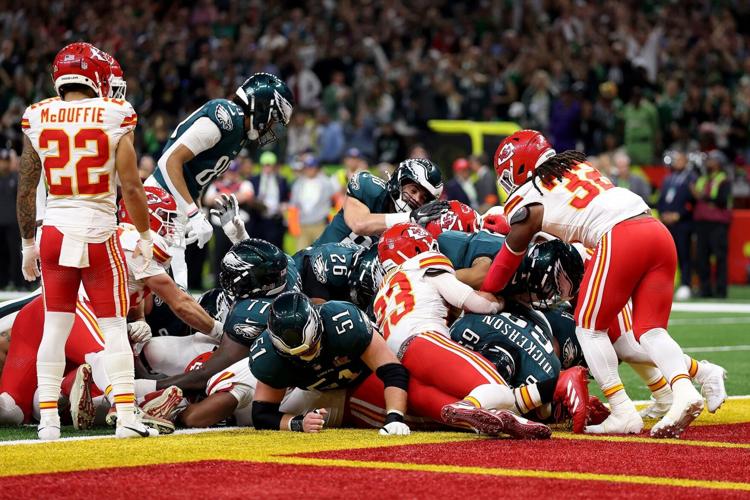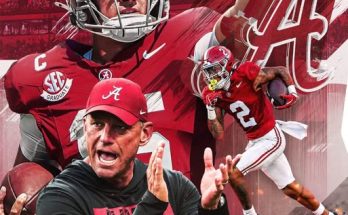NFL unveils adjustments to kickoffs, overtime, how the ball is spotted and instant replay but owners table ‘tush push’ ban
The National Football League (NFL) is never static. The game evolves with each passing season, driven by player safety concerns, technological advancements, and the league’s desire to improve the overall fan experience. For the 2025 NFL season, several notable changes have been introduced to various aspects of the game. These adjustments are designed to enhance fairness, safety, and clarity. Among these are modifications to the kickoff rule, overtime format, ball spotting procedures, instant replay reviews, and the potential ban of the controversial “tush push” play. However, the latter issue remains unresolved for now, as NFL owners have decided to table the discussion on the “tush push” for the time being.
Let’s delve into each of these changes, exploring their implications and how they will impact the future of NFL football.
1. Adjustments to Kickoff Rules:
Kickoffs have long been a source of controversy in the NFL due to their potential for high-speed collisions and injuries. The league has made a series of incremental changes over the years to reduce risk while maintaining the excitement of the play. For the 2025 season, the NFL has introduced further adjustments to kickoffs that aim to increase safety without diminishing the game’s competitive nature.
Key Changes:
- Move to a Safer Kickoff Distance: One of the most significant changes involves adjusting the kickoff distance. The NFL has decided to move kickoffs from the 35-yard line to the 30-yard line. This decision was made after careful analysis of data indicating that a greater number of injuries occur on kickoffs that travel long distances, especially when the ball is returned by players running at high speeds. The shift aims to decrease the number of high-speed collisions during returns.
- Touchback Rule Revision: Another adjustment aims to incentivize teams to aim for touchbacks, thus reducing the number of returns altogether. Teams will now receive a point for a successful touchback, not unlike how other sports incentivize certain outcomes. This adjustment makes the strategy of placing the ball in the end zone to prevent a return more attractive. It’s expected that teams will prioritize touchbacks as they can limit the risk of injury.
- Changes to Blocking Rules: In line with making kickoffs safer, the NFL has introduced new blocking rules. Blocking during kickoffs will be restricted to a defined zone, forcing players to engage within a smaller window and minimizing the potential for blind-side hits. This is a proactive step to reduce the number of injuries caused by players being hit in vulnerable positions.
While these changes are designed to improve safety, they have led to some debate among coaches, players, and fans. Critics argue that the emphasis on touchbacks and limiting returns might diminish one of the most thrilling aspects of the game—the kickoff return. However, the league maintains that these changes are necessary to prioritize player safety.
2. Overtime Format Adjustments:
Overtime in the NFL has been a contentious issue for years, with many fans and analysts questioning the fairness of the current rules. The existing sudden-death format, which only allows a team to win if they score a touchdown on the opening drive, has come under scrutiny, especially following high-profile playoff games where teams felt that they had been denied a fair opportunity to possess the ball.
Key Changes:
- Extended Overtime Period: The NFL has announced that overtime periods will now be extended to 15 minutes instead of the previous 10-minute duration. This adjustment is a response to concerns that games could end too quickly, especially when both teams have explosive offenses. With a longer overtime period, both teams will be given a more equitable chance to possess the ball and potentially score.
- Mandatory Possession for Both Teams: The most significant change is the introduction of a rule that ensures both teams will have a chance to possess the ball in overtime, regardless of what happens on the first possession. This change addresses the most frequent complaint about the old rules, where the team winning the coin toss could score a touchdown on the opening drive, leaving their opponents without a chance to respond.
This new rule mirrors the approach taken by college football, which has seen positive results in terms of fairness and excitement. While this change is a win for teams that were previously disadvantaged by the sudden-death rule, some purists argue that it dilutes the traditional overtime format and adds unnecessary complexity.
- Touchdown and Field Goal Rules: While both teams are guaranteed possession, the overtime period will continue under the existing rules regarding touchdowns and field goals. A team scoring a touchdown first will still win immediately, but if both teams score a touchdown or field goal, the game will continue until one team prevails. The change adds a more dynamic nature to the extra period, increasing excitement and drama.
3. Changes to Ball Spotting Procedures:
One of the more subtle but impactful changes for the 2025 NFL season concerns the way the ball is spotted. For years, teams have been frustrated with inconsistencies and errors in the placement of the ball after a play. This has been particularly problematic during critical moments, such as on third or fourth downs, where inches can make a significant difference.
Key Changes:
- Use of Technology for Accurate Spotting: The NFL has rolled out new technology that will assist referees in spotting the ball more accurately. This includes GPS-based sensors embedded in the ball, which will help provide real-time data on the exact location of the ball at the end of each play. The system will be synced with the stadium’s tracking equipment, giving referees an instant read on where the ball should be spotted.
- Review Process for Spotting: In addition to technological enhancements, a formal review process will now be available for disputing ball placements. Coaches will be allowed to challenge the spot of the ball once per game. This could prove pivotal in tight games where a few inches can determine the outcome.
These adjustments are expected to reduce the number of disputed calls regarding ball placement, thus improving the overall fairness of the game. It will also minimize the reliance on human error, which has occasionally led to controversial decisions.
4. Instant Replay System Overhaul:
Instant replay has become an integral part of modern football, allowing for the correction of obvious mistakes and improving the accuracy of officiating. However, the process has been criticized for being slow and cumbersome, often causing long delays in the flow of the game.
Key Changes:
- Faster Review Process: The NFL has introduced measures to speed up the replay process. Officials will now have access to a more streamlined system that allows for quicker video review. This will include AI-assisted technology that can immediately highlight the most relevant footage to assist officials in making a decision, cutting down on the time spent searching for the right angle.
- Expanded Reviewable Plays: The league has also expanded the list of plays that can be reviewed. Previously, only certain calls, such as touchdowns, turnovers, and certain penalties, were subject to review. In 2025, more types of plays, including certain types of penalties and fumbles, will be eligible for review. This will ensure that more decisions are made with the benefit of clear evidence.
- Improved Transparency for Fans: As part of this overhaul, the NFL is focusing on improving transparency for fans during replay reviews. Stadium screens will show fans at home and in the stands exactly what the officials are reviewing, which should increase understanding and reduce frustration.
5. Tush Push: A Controversial Play
One of the most divisive topics in the NFL over the past season has been the “tush push,” a play in which a quarterback is pushed by teammates while attempting to gain short yardage on a crucial third or fourth down. The play has proven highly effective for teams like the Philadelphia Eagles, leading to speculation that it could give an unfair advantage.
What is the Tush Push?
The tush push involves a quarterback crouching behind the center, with players lining up behind the quarterback to push him forward. This tactic, while legal, has become a lightning rod for debate. Critics argue that it provides an unfair advantage and undermines the spirit of traditional football, where a team must rely solely on their player’s individual skills. Proponents, however, see it as a smart and effective strategy within the rules.
Owners Tabling the Ban:
Despite the increasing attention and debate surrounding the tush push, NFL owners have decided to table a proposed ban on the play for the time being. The owners were divided on whether to outlaw the play, with some arguing that it is simply a part of the game and should be allowed, while others felt that it gives an unfair competitive advantage.
After much discussion, the owners have opted to delay any formal decision until further study can be done. The league will likely review the play in the coming seasons, especially in light of ongoing discussions regarding player safety and the potential for injury during such plays.:
The NFL’s 2025 rule changes reflect the league’s ongoing commitment to improving the game while balancing player safety, fairness, and excitement. With adjustments to the kickoff, overtime format, ball spotting procedures, and instant replay, the league is looking to modernize its game and address long-standing concerns. However, the decision to table the tush push ban highlights the delicate balance between tradition and innovation that the NFL must navigate in the years to come. As the league continues to evolve, fans can expect more changes, but these adjustments signal a step forward in making the game safer and fairer for all involved.



